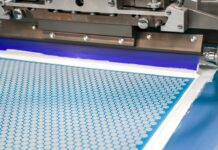As the industry moves towards mass production of customized products, one of the main challenges manufacturers encounter concerns their current production processes. Industrials should review their current production techniques in order to avoid losing market shares that would be acquired by 3D Printing services providers.
“Reviewing these production techniques” involves the integration of additive manufacturing (AM) that enables customization of products. However, a relevant use of this technology requires a complete change in design and production methodologies. New principles must therefore be integrated in the whole value chain: supply chain, materials management, design optimization, manufacturing, heat treatment, finishing, etc.
“This dossier aims to discover the importance of digitalization for the industrialization of additive manufacturing as well as potential hurdles that can prevent its full integration. ”
Jaya Krushna Panda, Industry Manager at Technavio, Phil Hatherley, General Manager, Materials Solutions – a Siemens Business and Dominik Solenicki, CEO of SINTRATEC have shared their respective experience in this dossier.
Technavio is a global technology research and advisory company. The company’s research and analysis focus on emerging market trends and provide actionable insights, thereby helping businesses identify market opportunities and develop effective strategies to optimize their market positions.
As its name implies, Materials Solutions – a Siemens Business, is a Siemens company. It specializes in the manufacturing of high-per-formance metal parts. The company is acknowledged as a reliable partner of various demanding industries (automotive, aerospace, medical, etc.).
Sintratec is a Switzerland-based manufacturer of 3D printing systems that integrate SLS technology. The Swiss manufacturer has successfully positioned itself in many European markets and supports its customers in both production and post-processing stages.
Prototyping, parts production, testing and materials selection…additive manufacturing is now part of the whole product development process. Even though, a lot of improvements still needs to be made, manufacturers agree with the fact that this technology is growing at fast pace.
Therefore, monitoring this evolution is essential, especially for industrials that can benefit from significant advantages in terms of productivity, quality and customer satisfaction. Furthermore, being at the forefront of innovation also requires to master new skills at the engineering level.
Engineers should therefore stay informed, on the other hand, should be given the required tools and methodologies to go through this digital transformation. In this vein, several questions need to be answered:
How much does digitalization affect the AM process ?
Technovia’s Industry Manager, Jaya Krushna Panda explains: “Digitalization affects the AM process starting from the raw material procurement to production management, distribution, and final customer. Digitalization of production for the automotive and aerospace industries reduces the operational complexity while embedding the complexity in the digital components of the system. For instance, the production planning and control for AM-enabled manufacturing may be distinctly different from that in the case of conventional production methods. Production routing, loading, and scheduling can become simplified as steps of production are combined through AM utilization.”


Phil Hatherley, General Manager, Materials Solutions – a Siemens Business, explains the impact of digitalization in AM at the software level: “the revolution in industrial production that is now underway thanks to advances in additive manufacturing would itself not have been possible without the comprehensive digital transformation of production processes, from design and engineering software, and simulation tools for printing all the way to control and monitoring of printers. Digitalization is critical for the AM process to create a component – without a digital 3D model of the component, AM cannot do anything. For the end products that require the use of AM in the manufacturing of some parts, digitalization can have a significant impact. For larger products such as gas turbines, the creation of a digital twin enables significant analysis and improvements to be considering prior to production.
In addition, digitalization opens new business opportunities. Reverse Engineering can only be executed creating a digital twin out of an existing part which needs to be replaced but the original supplier may not be able to deliver the requested part as a spare part and drawings can no longer be found.”
What challenges companies should overcome to enable digital transformation?
In addition to product innovation, digital transformation is also important because it enables companies to remain competitive and to maintain/accelerate profitability. In that sense, additive manufacturing brings another level of complexity and involves the integration of additional features that might enable to increase parts performance.
Digital transformation is not that easy…However, the low repeatability of the process seems to raise some concerns. The truth is that two identical machines with the same manufacturing parameters do not always deliver the same quality for the same part, which is a true hurdle when it comes to industrialization, even in a context of high productivity. This poor repeatability can be explained by many variables, including the digitization tool for additively manufactured parts.
Topological optimization, development of structures or free-form reconstruction thus play a key role in the use of this technology. As a matter of fact, they enable the use of few materials, gains over products lifecycles, and an added value created by the generation of new shapes.
Moreover, the redesign of parts often raises issues of qualification and standardization of parts, especially in industrial sectors subject to very strict regulatory frameworks (automotive, aeronautics, etc…).
Siemens had to deal with digital transformation during the transfer of metal AM from the R&D laboratory to the mass production of key components for its energy production activity. Today, the company supports the global industria-lization of technology thanks to its Siemens NX Additive Manufacturing software. The software utilizes specific modules that can analyze the component’s geometry to understand where support is required and automatically generate it for the build.
In other terms, the software would gather new tools for additive manufacturing, CNC machining, robotics and inspection and enables the digitalization of part manufacturing into a single, integrated end-to-end system.
“At Siemens we are employing a fully joined up digital approach to our manufacturing process. Within NX, we are now able to design the component with AM in mind. Utilizing specific modules NX can analyze the component’s geometry to understand where support is required and automatically generate it for the build.
Through NX we can even simulate the build process in order to understand where potential issues might occur before actual printing as we aim for right first-time manufacture.
Following actual additive manufacture, we track the components within our MES (Manufacturing Execution Systems) similar to any other manufacturing process. We also carry out dimensional scans of the actual component and use that digital representation of the component to compare against the original customer model in order to validate is geometrical condition.”
Is it an awareness issue?
Both the manufacturer and the clients should be aware of the potential of digitalization.
All experts of this dossier agree with the fact that digitalization has optimized interaction channels between manufacturers and customers: manufacturers can provide a complete approach of how and when a specific product can be used based on the choice of the customer (customization of a product). They can easily ensure the follow-up of the order (manufacturing stage) until the delivery of the product (data transmission). This is true regardless of the distribution channel and the players involved (suppliers, partners, resellers, customers).
According to experts, if AM has a big potential, therefore digitalization will play a crucial role in its transition from a prototyping tool to a serial production technology. As a matter of fact, its impact has already been discussed not only at the level of the manufacturing process, but also from materials management to production management, distribution and end customer.
As SINTRATEC CEO Dominik Solenicki said: “One cannot really count all the advantages of digitalization. For existing business costs can be lowered, efficiency increased and so on. But it gets really interesting, when digitalization enables whole new business models that where not possible before. AM is an excellent example, where you get unprecedented speed to realize a part and lift a lot of manufacturing and design constraints.”

From Sintratec’s experience, a great number of SMEs want to combine digitalization and additive manufacturing. Talking about a customer who offers manufacturing services and quickly prints individualized robot grippers to customize his assembly lines, Dominik Solenicki points out that the main challenge such type of companies encounters in the adoption of AM is education. Both engineers and decision-makers have to be aware of the benefits of the technology for their manufacturing process and should be trained to this.
To sum up…
In a nutshell, the industrialization of additive manufacturing raises a number of issues. Even though, this technology is part of the fourth industrial revolution, one should note that the stakes are not the same for big players and SMEs.
At the SMEs level, experts mentioned an awareness issue while at the industrial level, the challenge consists in finding out at what scale digitalization will be implemented. There is therefore a big gap between the two shores.
For the CEO of Sintratec, the more companies implement digitalization, the more “the need for a manufacturing process that transforms digital into real world assets will increase.” “It is my strong believe that business transactions and business operations will virtualize to an extreme degree in the very near future and AM will step in whenever we need to have something manifested in the real world”, Dominik Solenicki concludes.
Jaya Krushna Panda, from Technavio adds that “a joint effort from the government and research centers is required to train experts and to establish accepted technical standards.”
Digital transformation cannot be done without certain investments. In recent years, several countries have launched projects and initiatives to promote the development of AM centres or digital manufacturing centres.
A global race that aims to promote digitalization in industries is currently taking place and world economies are relying on it.





